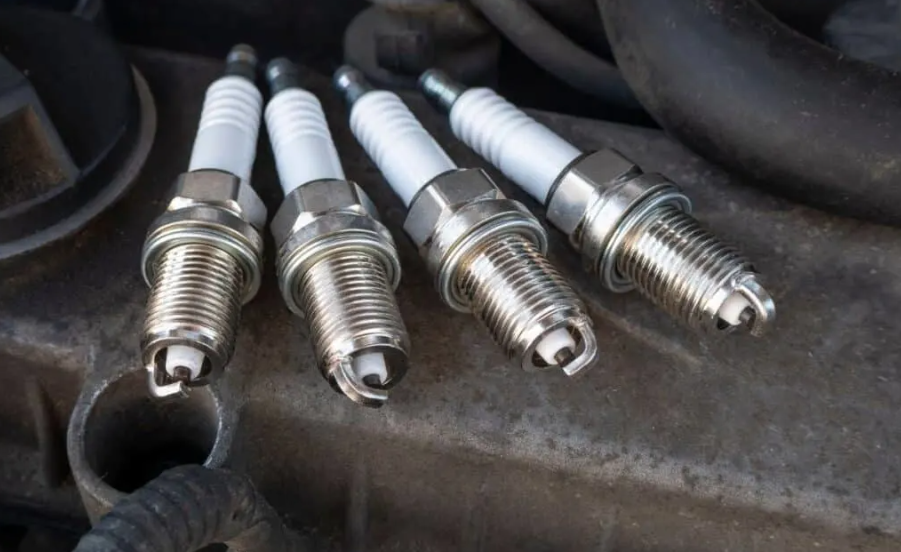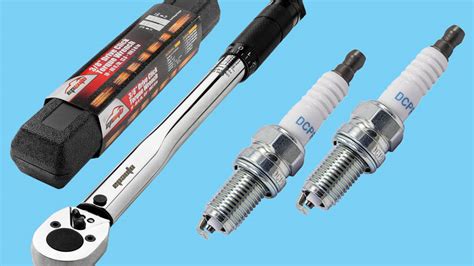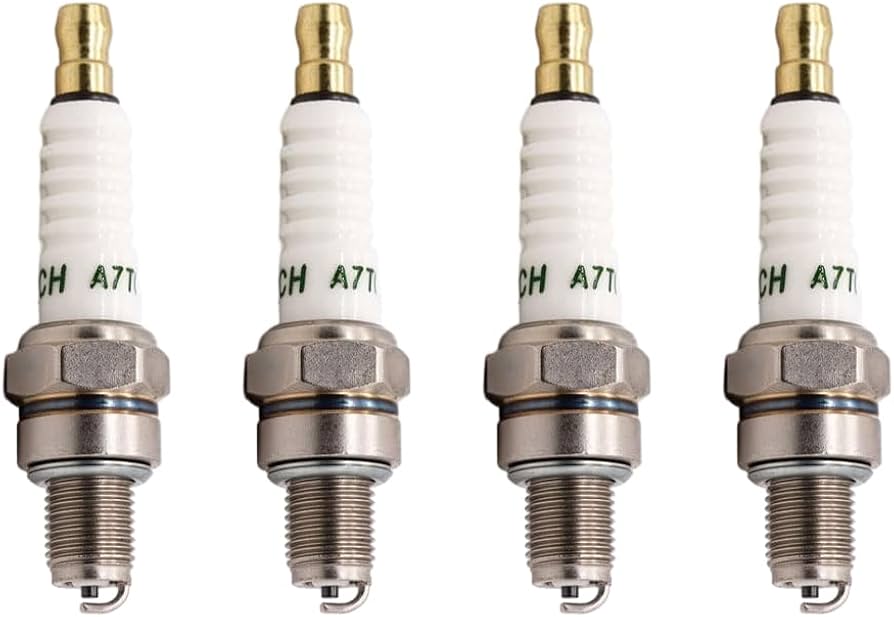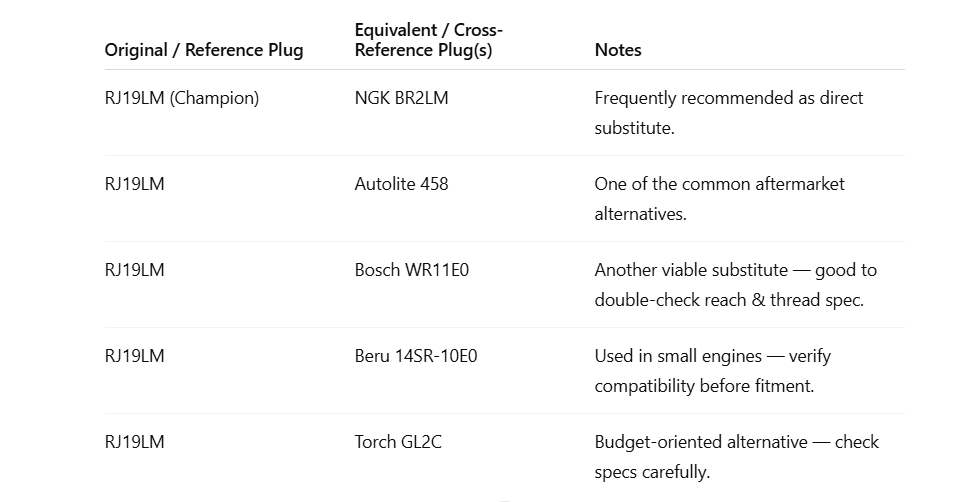How tight should spark plugs be? Spark plugs should be tightened to the manufacturer’s specified torque to ensure a proper seal and prevent damage. Both under-tightening and over-tightening can cause engine issues.
Spark plugs are essential components of your vehicle’s engine, responsible for igniting the air-fuel mixture that powers your car. Although these tiny parts might seem simple, their proper installation is crucial for your vehicle’s performance and long-term engine health. One of the most important factors to consider when installing spark plugs is ensuring they are tightened to the correct torque. Incorrectly tightened spark plugs can lead to engine misfires, poor fuel efficiency, and even severe engine damage.
Getting the torque right means striking a balance—too tight, and you risk damaging the spark plug or engine threads; too loose, and you risk engine misfires and poor performance. This guide will dive into everything you need to know about how tight spark plugs should be, why it matters, and the tools and techniques that ensure a proper fit. Whether you’re a DIY mechanic or just a curious car owner, understanding how to properly tighten spark plugs will help you maintain your vehicle in optimal condition.

Contents
What Is Spark Plug Torque and Why Does It Matter?
Torque is the force applied when tightening a bolt or nut. For spark plugs, it is the specific amount of rotational force needed to secure the spark plug in the cylinder head. Correct torque is essential for several reasons:
- Ensuring a Proper Seal: When a spark plug is properly torqued, it ensures a tight seal between the plug and the cylinder head, preventing any combustion gases from leaking.
- Preventing Damage: Tightening a spark plug to the recommended torque ensures it’s not over-tightened, which could strip the threads in the engine or crack the spark plug itself.
- Maintaining Performance: Spark plugs that are installed correctly contribute to better engine efficiency, fuel economy, and smoother performance.
How Do You Know If You’re Using the Correct Torque?
The correct torque for your spark plugs can usually be found in the vehicle’s manual or on the spark plug packaging. While the general range falls between 15–30 N·m (Newton-meters), it’s important to follow the specifications for your particular make and model of vehicle.
How to Tighten Spark Plugs Correctly
Properly tightening spark plugs is crucial to ensure your engine operates at peak performance. In this section, we’ll walk you through the step-by-step process of securely installing and tightening spark plugs to prevent damage and ensure a proper seal.
Step 1: Identify the Type of Spark Plug Seat
Before you begin, it’s crucial to identify the type of seat your spark plug uses. Spark plugs come in two main types of seats:
- Gasket (Flat) Seat: This type of plug uses a washer that compresses when you tighten it, forming a seal.
- Tapered (Conical) Seat: In this case, the plug forms a seal directly against the cylinder head.
The torque procedure varies depending on the type of seat, so knowing this information ensures you tighten your plugs correctly.
Step 2: Install the Spark Plug by Hand
- Begin by threading the spark plug into the engine by hand. This ensures that the threads are aligned correctly and helps avoid cross-threading, which can damage both the plug and the engine.
- Tighten the plug until it’s snug. At this point, you should stop using your hands and prepare to use a torque wrench for the next step.
Step 3: Use a Torque Wrench to Tighten the Spark Plug
- For Gasket Seat Plugs: Once the plug is hand-tight, use a torque wrench to tighten it an additional 1/2 to 2/3 of a turn.
- For Tapered Seat Plugs: Tighten the plug with the torque wrench, but be careful not to over-tighten it. Typically, this requires tightening an additional 1/16 of a turn after hand-tightening.
The torque wrench ensures that you apply the correct amount of force to the spark plug. This step is critical in ensuring the spark plug stays in place without causing damage.
Step 4: Verify Proper Tightness
Once the spark plug is installed and torqued, you should check the plug to make sure it is neither too tight nor too loose. A properly tightened spark plug will feel firm but won’t resist further turning. If you feel resistance before reaching the desired torque value, stop immediately to avoid damaging the spark plug or engine.

Common Mistakes to Avoid
When it comes to installing spark plugs, even small mistakes can lead to significant issues down the road. In this section, we’ll highlight the most common errors people make when tightening spark plugs and how to avoid them for optimal engine performance.
Under-tightening Spark Plugs
Under-tightening spark plugs is one of the most common mistakes people make. When a spark plug isn’t tightened enough, it doesn’t form a proper seal with the cylinder head. This can lead to combustion gases leaking out, causing misfires and poor engine performance. It can also result in the plug loosening over time, which could cause further engine damage.
Over-tightening Spark Plugs
Over-tightening spark plugs can be just as detrimental as under-tightening. Applying too much torque can strip the threads in the engine or crack the spark plug. In extreme cases, over-tightening can cause the spark plug to break, leading to costly repairs. Always ensure that you adhere to the recommended torque specifications for your spark plugs.
Using the Wrong Tools
While a standard socket wrench may work for some tasks, it’s essential to use a torque wrench when tightening spark plugs. A torque wrench is calibrated to apply precise amounts of torque, which is necessary for properly installing spark plugs. Without it, you could either under-tighten or over-tighten the plugs.
How Do I Know the Right Torque for My Spark Plugs?
The correct torque for spark plugs varies depending on the type of engine and the spark plug used. Here’s a general guideline:
- M8 Spark Plugs: Torque between 8–10 N·m.
- M10 Spark Plugs: Torque between 10–15 N·m.
- M12 Spark Plugs: Torque between 15–20 N·m.
- M14 Spark Plugs: Torque between 20–30 N·m.
- M18 Spark Plugs: Torque between 30–40 N·m.
While these are general guidelines, always consult your vehicle’s manual for specific torque values.
Tools You’ll Need
To properly tighten spark plugs, you will need the following tools:
- Torque Wrench: For applying the correct torque to the spark plug.
- Spark Plug Socket: This is a special socket that fits the shape of the spark plug.
- Extension Bar: If your spark plugs are located deep within the engine, an extension bar will help you reach them.
- Anti-seize Compound: Some manufacturers recommend using anti-seize on the threads of the spark plugs to prevent corrosion, but it’s essential to verify this with your vehicle’s manual.
Frequently Asked Questions
Here are some FAQs about spark plug tightness –
1. Can I install spark plugs without a torque wrench?
While it’s possible to install spark plugs without a torque wrench, it’s not recommended. A torque wrench ensures that you apply the correct amount of force, preventing damage and ensuring optimal performance.
2. Should I use anti-seize on spark plug threads?
Some manufacturers recommend using anti-seize, while others don’t. It’s important to check your vehicle’s manual to see whether or not you should apply anti-seize. Too much anti-seize can affect the torque readings.
3. How can I tell if a spark plug is too tight or too loose?
If a spark plug is too tight, it will resist turning, and you may notice signs of damage like cracked ceramic or stripped threads. A plug that is too loose will not sit flush with the cylinder head, leading to misfires and poor performance.
4. What happens if I over-tighten spark plugs?
Over-tightening spark plugs can strip the threads in the cylinder head, crack the spark plug, or damage the engine. It’s important to follow the manufacturer’s torque specifications carefully.
5. Can spark plugs be reused?
Spark plugs are generally designed to last for a long time, but they should be replaced at regular intervals to ensure proper engine function. If they are in good condition, they can sometimes be reused, but always check for signs of wear or corrosion before reusing them.
Conclusion
Properly tightened spark plugs are essential for ensuring your engine operates efficiently and lasts longer. By following the recommended torque values, using the correct tools, and avoiding common mistakes, you can install spark plugs with confidence. Always refer to your vehicle’s manual for specific guidelines, and remember that taking the time to get it right will pay off in the long run with smoother engine performance and better fuel efficiency.





